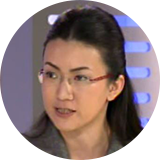The Emperor, aged 59, took the throne on May 1 following the abdication of his father, Emperor Emeritus Akihito.
The key ceremony marking his enthronement, "Sokuirei-Seiden-no-gi," took place at the Imperial Palace in Tokyo. The event was conducted in keeping with traditions that date back centuries.
Imperial ritual
The day started at 9 a.m. with the private "Kashikodokoro-Omae-no-gi" ritual.
It involved the Emperor, dressed in white traditional court wear, visiting "Kashikodokoro," the main sanctuary in the Imperial Palace where the Sun Goddess is said to be enshrined.
According to tradition, the Emperor tells the goddess he is holding the enthronement ceremony by reading out a text written in Old Japanese. He then visits two other sanctuaries to notify the souls of his ancestors and various deities.
Emperor declares enthronement at main ceremony
At 1 p.m., the enthronement ceremony, or "Sokuirei-Seiden-no-gi," took place in the State Room.
The Emperor wore a robe called the "Kourozen-no-Gohou." The garment is only allowed to be worn by the Emperor and it is believed its reddish-brown color represents the sun. Chamberlains carrying the sacred sword and jewel, ancient Imperial treasures, accompanied the Emperor.
Empress Masako wore a multilayered ceremonial kimono.
This tradition dates back to the 8th century, at the time of Emperor Kanmu's accession.
Emperor Naruhito then ascended the Takamikura throne. It is a 6.5-meter-high structure on a raised platform, topped with an ornate canopy.
During his speech, the Emperor emphasized his role as the symbol of the State and referred to the paths taken by his parents.
"I hereby swear that I will act according to the Constitution and fulfill my responsibility as the symbol of the State and of the unity of the people of Japan, while always wishing for their happiness and the peace of the world and standing with the people."
The speech was followed by a congratulatory address by Prime Minister Shinzo Abe delivered on behalf of the Japanese people, and three rounds of banzai, a traditional exclamation wishing for long life.
State leaders and monarchs from more than 180 countries, regions and organizations were in attendance.
Among the delegates were Chinese Vice President Wang Qishan, Myanmar's de facto leader Aung San Suu Kyi, and the United States' Secretary of Transport Elaine Chao.
Britain's Prince Charles was also in attendance. He was among the visitors, along with the late Princess Diana, for Emperor Emeritus' enthronement 29 years ago.
King Willem-Alexander of the Netherlands was also there, along with his wife Queen Maxima. Emperor Naruhito and Empress Masako attended the king's coronation in 2013. The Emperor and King share an interest in the science of water conservation.

Succession issue
The enthronement has highlighted a number of challenges facing the Imperial Household. One issue is maintaining a stable line of succession.
Following Emperor Naruhito's enthronement, only three eligible heirs remain: Crown Prince Akishino; the Crown Prince's 13-year-old son, Prince Hisahito; and the Emperor Emeritus's 83-year-old brother, Prince Hitachi.
Under the Imperial House Law, only male descendants can take the throne. This means if Prince Hisahito becomes Emperor but does not have a son, there will be no one to succeed him. This has led to the intensifying of a decades-long debate on whether to allow a woman to become Emperor.

NHK poll: 74 percent in favor of woman ascending throne
NHK recently conducted a poll on the Imperial Family. Pollsters surveyed 2,790 people from September 28 through 29, with 1,539 responding.
On the question of allowing a woman to become Emperor, 74 percent said they were in favor, far outnumbering the 12 percent who were opposed. Support for a woman ascending the throne was particularly strong among respondents between the ages of 18 and 29, with 90 percent saying they were in favor.

The Emperor and the post-war Constitution
This is the second enthronement ceremony since Japan's post-war Constitution took effect in 1947. The document redefined the role of the Emperor, proclaiming him to be a symbol of the State with no political power. The Emperor only performs acts laid out in the Constitution.
Several elements in the enthronement ceremonies were changed after World War II to underscore the Emperor's new role.
Until the 1990 ceremony, the Prime Minister's round of banzai calls commemorating the enthronement had been made from a lower courtyard. But on that occasion, then-Prime Minister Toshiki Kaifu made the call in the same room as then-Emperor Akihito to signify that the sovereignty of the country resided with the people and not the Emperor. Prime Minister Abe did the same during this ceremony.
Fallout of Typhoon Hagibis
A motorcade parade scheduled for after the ceremony was postponed following Typhoon Hagibis. The government decided to rearrange the date to give priority to dealing with the aftermath of the storm. The new date is set for November 10.

